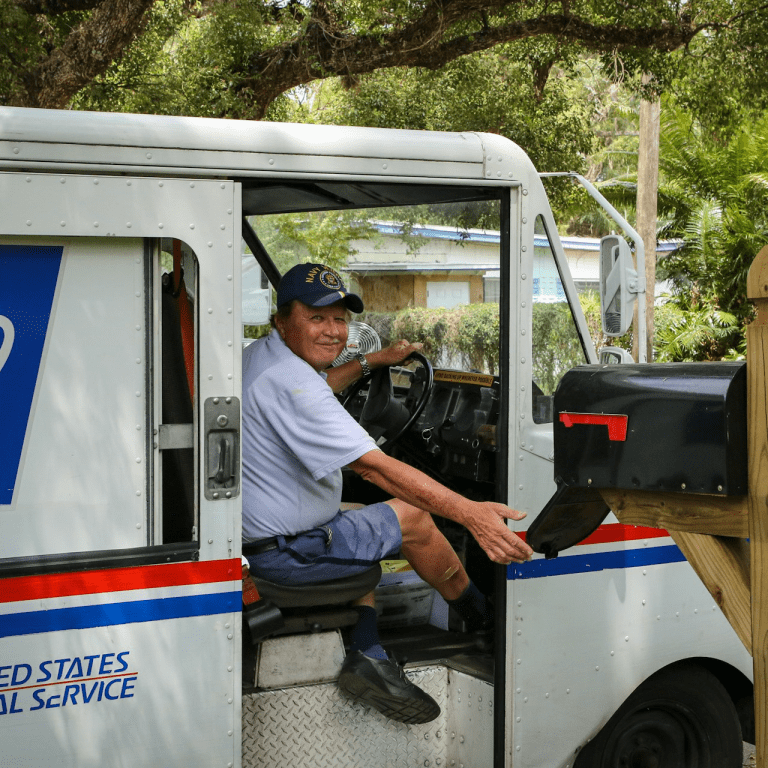Key Takeaways
-
Delaying Medicare Part B enrollment when you’re eligible could result in lifelong late penalties and coverage gaps, especially under the 2025 PSHB rules.
-
While you may not need Part B immediately if you’re still working, retirees under PSHB must understand when enrollment becomes mandatory to avoid paying more later.
Why Medicare Part B Matters Under PSHB in 2025
If you’re a Postal Service worker or retiree, 2025 brings important changes with the Postal Service Health Benefits (PSHB) Program. One of the most impactful requirements involves Medicare Part B. Whether you’re nearing retirement or already enrolled in PSHB, you need to understand how Medicare Part B fits into your future health coverage—and what happens if you delay.
While skipping Part B might seem like a cost-saving move now, the consequences of late enrollment can stretch for years. The penalties are not temporary, and under PSHB rules, failure to act in time could mean paying more for less coverage.
Who Must Enroll in Part B Under PSHB?
You are required to enroll in Medicare Part B if all of the following apply:
-
You are entitled to Medicare Part A (typically at age 65).
-
You are a Postal Service annuitant or family member.
-
You become Medicare-eligible on or after January 1, 2025.
Certain exceptions exist. You are not required to enroll in Part B if:
-
You retired on or before January 1, 2025, and were not already enrolled in Part B.
-
You were an active Postal employee aged 64 or older as of January 1, 2025.
-
You live abroad permanently.
-
You receive qualifying coverage through Indian Health Services or Veterans Affairs.
Everyone else—especially if you turn 65 in 2025 or later—must act during their Medicare Initial Enrollment Period to avoid penalties and loss of PSHB drug coverage.
What Happens If You Delay Medicare Part B Enrollment?
Delaying Part B without valid coverage triggers two major consequences:
1. Late Enrollment Penalty
For each 12-month period you delay enrollment beyond your eligibility, a 10% surcharge is permanently added to your monthly Part B premium. For example:
-
A 3-year delay = a 30% higher premium for life.
Even if you later decide to enroll during a General Enrollment Period (January 1 to March 31), your coverage doesn’t start until July 1, and the penalty still applies.
2. Loss of Drug Coverage Under PSHB
PSHB plans integrate with Medicare Part D through an Employer Group Waiver Plan (EGWP). But to be eligible, you must have Medicare Part B in place. If you opt out of Part B, you:
-
Lose prescription drug coverage under PSHB.
-
Can’t re-enroll in the PSHB drug benefit unless you qualify for a special enrollment period.
These two consequences alone can turn an attempt to save money into a costly, long-term mistake.
Understanding the Enrollment Timeline
Timing matters. Here are the specific enrollment windows you need to know in 2025:
Initial Enrollment Period (IEP)
-
Starts 3 months before the month you turn 65.
-
Includes your birth month.
-
Ends 3 months after your birth month.
Enrolling during the IEP ensures:
-
No late enrollment penalties.
-
Seamless integration with PSHB.
-
Immediate drug coverage under your PSHB plan.
General Enrollment Period (GEP)
-
Runs from January 1 to March 31 annually.
-
Coverage begins July 1 of the same year.
If you miss your IEP and don’t qualify for a Special Enrollment Period, you must wait for the GEP. Your PSHB drug coverage will be inactive until Medicare Part B and D coverage resumes.
Special Enrollment Period (SEP)
You may qualify for an SEP if you delay Part B due to:
-
Active employment (and group coverage).
-
Residency abroad.
SEPs generally last 8 months after the end of qualifying coverage or event. Enrolling during an SEP avoids penalties.
PSHB and Medicare: A Dual System That Works Better Together
In 2025, most PSHB plans are structured to coordinate with Medicare. When both Part A and Part B are in place, your PSHB plan often provides:
-
Lower deductibles
-
Reduced coinsurance and copayments
-
Expanded provider access
-
Automatic drug coverage under Medicare Part D (via EGWP)
If you don’t have Part B, the PSHB plan becomes your primary payer. That means:
-
You’re responsible for higher out-of-pocket costs.
-
PSHB won’t fill the gaps Medicare typically would.
The two programs are designed to complement each other. Without Part B, you lose that synergy and face higher medical costs.
Common Misunderstandings That Lead to Delays
Many Postal retirees make assumptions that can result in major enrollment missteps. Here are common misunderstandings:
-
“I’m already covered under PSHB, so I don’t need Part B.”
In 2025, drug coverage under PSHB requires Medicare Part B if you’re Medicare-eligible.
-
“I can sign up for Part B later without penalty.”
Unless you qualify for an SEP, you’ll face late penalties and delayed coverage.
-
“Medicare and PSHB are duplicates, so I only need one.”
Medicare becomes primary once enrolled, and PSHB acts as secondary. Together, they reduce your costs.
Understanding these myths—and rejecting them—can save you thousands.
How Costs Stack Up Without Medicare Part B
If you’re enrolled in PSHB but not in Part B, here’s what you may be responsible for:
-
Full deductibles: Some PSHB plans waive these only when Part B is active.
-
Higher coinsurance: You may pay 20%–30% for services Medicare would have covered first.
-
No Medicare drug integration: You pay full price for prescriptions unless you have separate coverage.
In contrast, combining Medicare Part A and B with PSHB often results in:
-
Lower medical costs
-
Broader provider access
-
Fewer billing issues
It’s a short-term cost for long-term savings—if you enroll on time.
When Keeping Part B Isn’t Required—but Still Smart
Even if you’re not required by PSHB rules to enroll in Part B, it may still be wise. This includes those who:
-
Retired before January 1, 2025
-
Were exempt from the Part B requirement due to age
Why? Because most PSHB plans still coordinate better when Medicare is involved. Even without a legal requirement, Part B can help reduce what you pay out of pocket. In some cases, plan designs include benefits like:
-
Part B premium reimbursements
-
Waived cost-sharing for Medicare-covered services
Skipping Part B might seem like a savings—until you face hospital bills, outpatient procedures, or high drug costs.
Enrollment Isn’t Automatic—You Must Take Action
Enrollment in Medicare Part A is usually automatic if you’re receiving Social Security benefits. However, Part B is not automatic unless you actively enroll or are already drawing benefits.
If you delay:
-
You must monitor your enrollment window.
-
Missing it could mean penalties.
-
Your PSHB plan will not offer full benefits without Medicare Part B.
So, don’t assume the process will take care of itself. It won’t.
Understanding the Long-Term Impact of Your Enrollment Choice
What you decide now has consequences every year thereafter. Medicare Part B decisions affect:
-
Your monthly premium for life
-
Your ability to access drug coverage under PSHB
-
How much you pay for outpatient and doctor services
-
Whether your plan reduces your cost-sharing
The choice to delay may be yours—but the price can quickly outweigh the savings.
Take the Right Step While You’re Still Eligible
Enrolling in Medicare Part B may not feel urgent today, but it’s essential for your PSHB coverage tomorrow. Whether you’re retiring this year, turning 65 soon, or already eligible for Medicare, delaying action can set you up for higher bills and fewer benefits.
Review your eligibility. Mark your calendar. Speak with someone who understands the 2025 PSHB rules and how they apply to your situation.
Get in touch with a licensed agent listed on this website to receive personalized assistance on whether, when, and how to enroll in Medicare Part B.










